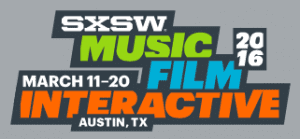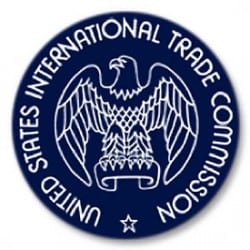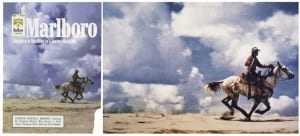
 SXSW 2016 is in the books and, for the third time in five years, I was invited to speak on a panel at the event. Also for the third time in five years, I made the drive from New Orleans to Austin to attend.
SXSW 2016 is in the books and, for the third time in five years, I was invited to speak on a panel at the event. Also for the third time in five years, I made the drive from New Orleans to Austin to attend.
The conference, which marked it’s 30th year (it’s 22nd year with Film and Interactive), has grown to become a key cultural touchstone of the tech community. Though it’s often referred to as “Spring Break for Entrepreneurs” the event is more akin to Burning Man, a pilgrimage that is one part party, one part conference, one part exhibition and several parts celebration of a shared culture.
At SXSW Interactive, that culture is tech culture.
But tech culture, as you learn at SXSW, can be a fickle one. It’s a culture that celebrates that which is new or revolutionary (or disruptive as its more often called). This disruption can be frivolous or it can be life-changing, it can be very fast or it can be very slow. However, the one thing it can never be is boring.
You see this year over year at SXSW. Just by eavesdropping on conversations in the convention center, you’ll quickly pickup on the buzz word or app of the year but those rarely make it to the next one. In 2012, QR codes covered nearly every sheet of paper you laid eyes on. In 2016 they were nowhere to be found, replaced by talk of VR and countless demos of new products.
This frantic pace of tech culture is both its greatest strength and greatest weakness. Tech is constantly challenging itself, working to usurp the usurper and trying to hone and improve. This leads to rapid growth and improvement and the ability to tackle problems previously thought to be unapproachable.
But this doesn’t lend itself to a great deal of self-reflection and backward looking. It also causes obstacles to disruption to be seen as things to be overcome or ignored. Even if those obstacles are laws. This can make it difficult in tech communities to have a conversation about things like copyright law, that is, until the law itself becomes a target for disruption.
But all of this begs a question, what happens when a community that values creativity and novelty finds itself regularly at odds with intellectual property, including both patents and copyrights? How do you have the conversations you need to address these issues and begin to bring about real change, whether cultural or legal?
At SXSW, those are tough questions to answer, mostly because they are tough questions to ask.
What if You Held a Dialog, But No One Came
 On Monday March 14th, I attended a panel entitled “Zombie SOPA: A New Threat to the Open Internet“. The panel focused on the ClearCorrect case, where the International Trade Commission (ITC) is attempting to assert the authority to block the importation of digital goods that are patent infringing.
On Monday March 14th, I attended a panel entitled “Zombie SOPA: A New Threat to the Open Internet“. The panel focused on the ClearCorrect case, where the International Trade Commission (ITC) is attempting to assert the authority to block the importation of digital goods that are patent infringing.
If the ITC is able to assert such authority, it would likely also likely extend to copyright, which would give it the power, theoretically, to order infringing websites be blocked.
Site blocking was a key component of the Stop Online Piracy Act (SOPA) and the Protect IP Act (PIPA), which were famously scuttled after a huge online protest in January 2012. Four years later, a tech friendly panel (including Mike Godwin of Godwin’s law fame) covering what they felt was a run-around to make site blocking a reality, barely drew 30 people and saw limited engagement.
However, it wasn’t the fault of the panel. At SXSW 2012, just months after the SOPA/PIPA protests, I attended a panel entitled Why Doesn’t Congress Grok the Internet that featured a staff from Senator Ron Wyden, who was a core figure in the SOPA/PIPA, and it too suffered from poor attendance. Likewise, my panel that year entitled “American Copyright: Will Government Go Too Far?” also saw only limited interest.
When millions online, including a high percentage of people who attend SXSW actively engaged in the original protests. These are clearly subjects that the tech community is passionate about. Yet, at SXSW, these types of conversations rarely seem to succeed.
That’s because SXSW is, on the whole, a celebration of tech and not an ideal venue for serious conversations. This was true in other areas as well. For example, this year SXSW dedicated an entire section of its programming to online harassment (after initially cancelling it due to security concerns). Unfortunately, it too suffered from poor attendance.
The online harassment panels had some additional challenges, including an inconvenient venue and overlapping panels, but the event likely still would have struggled even without those hurdles.
And I say that because a talk I gave in 2014 on the topic of revenge porn was very sparsely attended and saw almost no audience interaction.
While the organizers at SXSW try to include a variety of conversations, the audience invariably chooses ones that fit their preferred spirit and at SXSW, that spirit is one of revolution and accomplishment.
Having the Conversations Anyway
 But none of this is to say that serious conversations don’t happen at SXSW and that SXSW has no value. Far from it.
But none of this is to say that serious conversations don’t happen at SXSW and that SXSW has no value. Far from it.
SXSW, from a panel perspective, is at its strongest when it enables serious conversations by setting them up with more populist topics. For example, a great panel entitled “Creative Thievery = What’s Yours Is Mine“, which featured both attorney Sergio Munoz Sarmiento Clancco Law blog fame and Hrag Vartanian, the editor-in-chief of Hyperallergic Media, was extremely well-attended (largely by creatives) and was the sight of a great conversation about appropriation art.
The panel featured and discussed a series of examples from artists such as Richard Prince and Shepard Fairey among others with great audience engagement about the ethics of such art. Surprisingly to me, the audience seemed one-sided in its condemnation of most appropriation art though understandably wavered as the new creations grew more distant from the source material.
I also saw this at my talk this year, which I shared with Rami Essaid at Distil and Katie Sunstrom at Lorance & Thompson. The three of us, along with moderator Orion Cassetto at Distil, opened a conversation entitled “Digital Content and the Legality of Web Scraping” was also well-attended and had great conversation both between us and the audience. Of the three talks I’ve done, it was easily the best-attended and saw the most engagement from the audience.
What these and other successful talks I saw had in common was that the difficult issues weren’t front and center. Whether it was web scraping or appropriation art, the subject was a framing device for a tough conversation about law and ethics.
We need to have serious conversations about the role of content use in tech, but if you hold one, there may not be many takers at an event like SXSW. However, hold one on appropriation art or a tech issue of interest, you can likely have at least some of the dialog you want.
That’s because, while SXSW doesn’t shy away from tough topics, it is very much a celebration and populist conference put on and attended by those who want to marvel in the great things tech does, not ask tough questions about tech’s future.
Bottom Line
This year at SXSW, the highlight was President Obama’s keynote on the first day. The excitement of seeing a sitting President speak drove a capacity crowd to the talk. However, many of the same subjects he covered would not have done well as a panel or a presentation. In that speech, it was who was saying it, not what was being said, that drove the interest.
And that’s because SXSW is not a business conference. It is a celebration. As such, it’s attempts to be serious and be heavy often struggle. Still, even in festive moments, there are opportunities for serious conversations, it’s just a matter of finding ways to approach them.
And that, in the end, is the important thing to remember about SXSW. What it is, is great and beautiful. But the sooner we stop thinking of it as a computer programming convention and more like Burning Man for the tech community, the sooner we can find ways to have the conversations we need and make sure that it’s still a place for the important conversations we need.
For me, that means looking at copyright, plagiarism and content misuse issues as they relate to tech. For others, that may mean something different. Either way though, SXSW can be a great place for important dialogs, it just may be a little difficult to get them started.
Want to Reuse or Republish this Content?
If you want to feature this article in your site, classroom or elsewhere, just let us know! We usually grant permission within 24 hours.